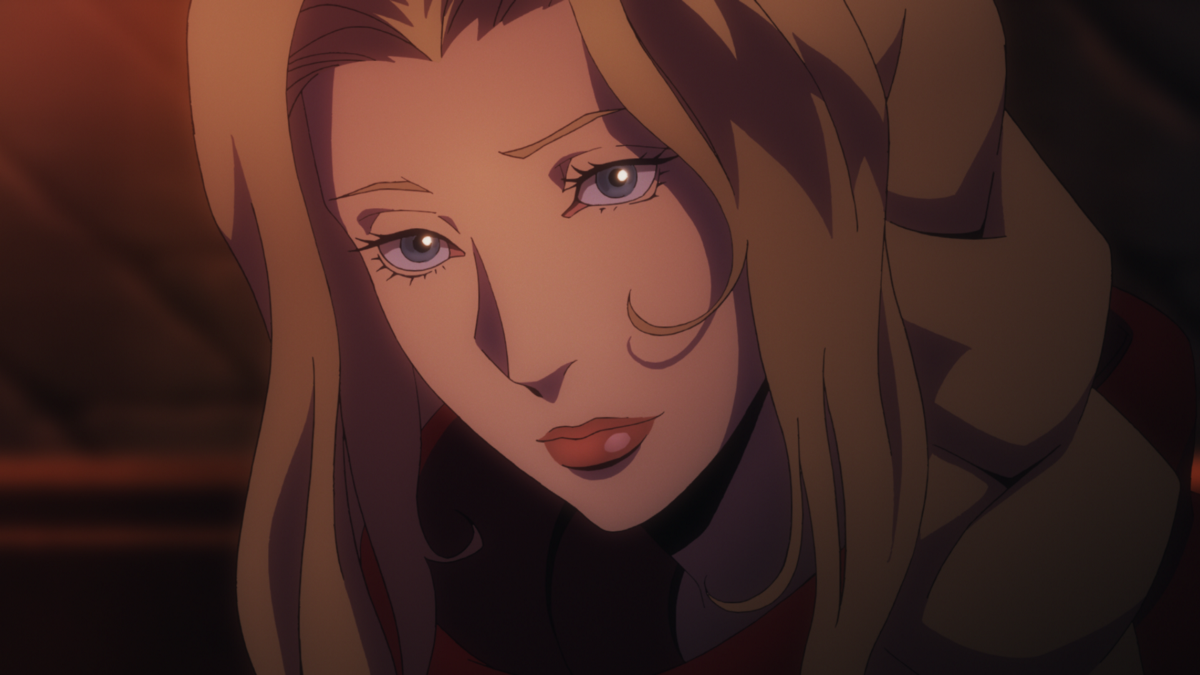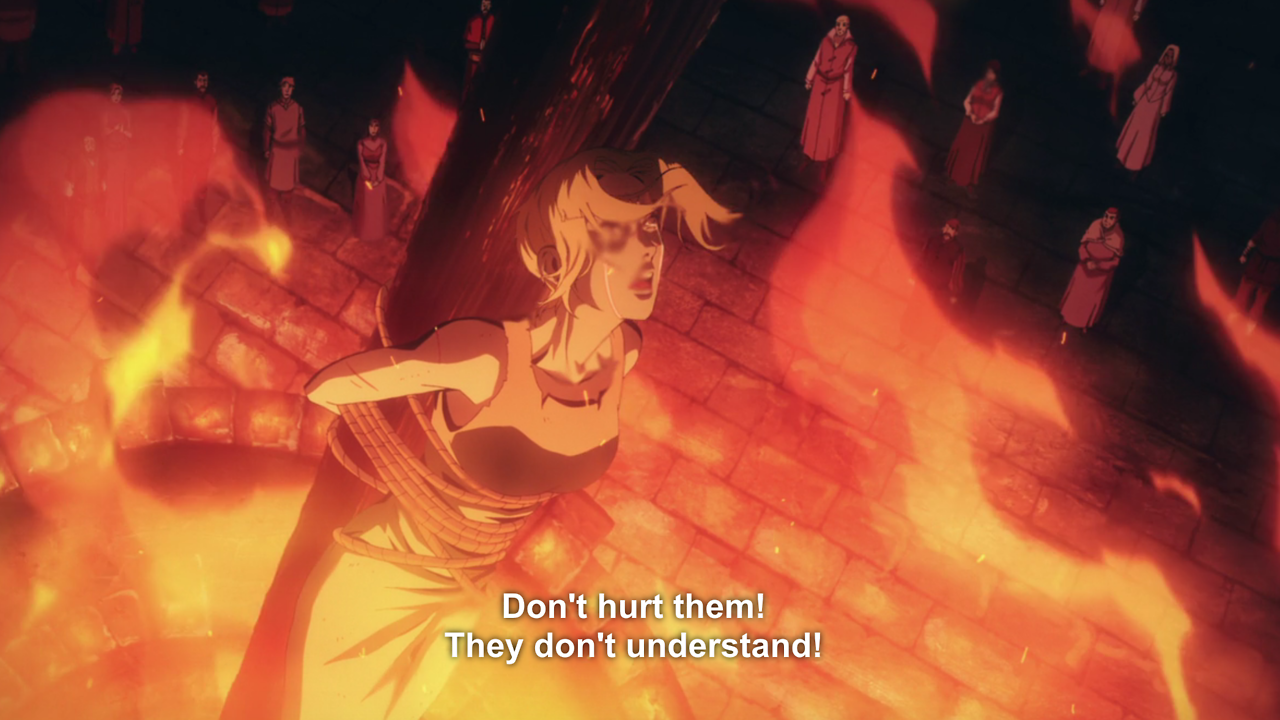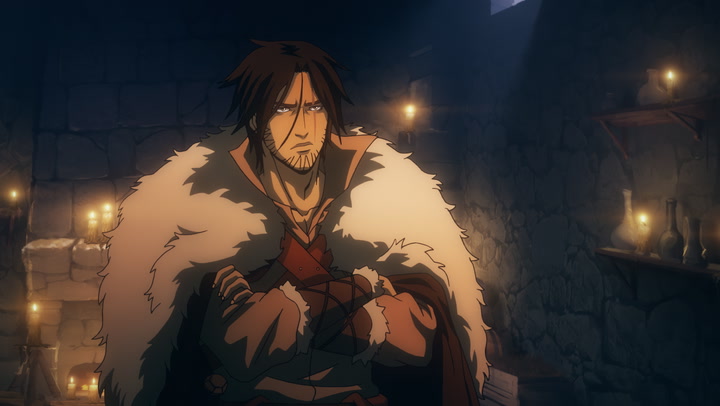Castlevania Season 1 Easter Eggs and Reference Guide
Netflix's Castlevania series is full of easter eggs and callbacks to the original video game series. Here's what we found!
Netflix’s Castlevania came out of nowhere and captured the attention of franchise fans who still can’t believe that one of the few respectable video game adaptations so happens to be based on a series that hasn’t gotten a lot of love recently.
While Castlevania features some notable diversions from the established mythology of the games – many of which were implemented in the name of fleshing out Castlevania III‘s thin story – that doesn’t mean that the show doesn’t pay homage to its source material. In fact, Castlevania‘s first four episodes are loaded with callbacks that all but the most ardent of Castlevania fans might have missed.
To help ensure that you squeeze every bit of Castlevania goodness out of the series’ painfully short first season, here’s our rundown of the Easter eggs and references found in Netflix’s latest cult hit.
Also, while we scoff at the notion that we could possibly have missed a single reference (“Ha!,” we say while swirling our brandy), be sure to let us know in the comments below if you spotted any Easter eggs in Castlevania that we might not have noticed.
Episode One
The Field of Impaled Bodies
This is a very simple, but welcome, reference that many of you likely spotted. Nevertheless, it’s nice to see that the show pays homage to the real-life Dracula inspiration – Vlad the Impaler – by showing a field of bodies that have been impaled.
Further Reading: Castlevania Season 1 Review
Actually, this does create a bit of chronological confusion as Castlevania: Lament of Innocence severed Dracula’s ties with the Vlad the Impaler lineage so far as that universe goes. However, as this show is an adaptation of Castlevania III, this lineage reference is technically accurate as that game’s instruction manual directly referenced Dracula’s past as Vlad.
Lisa

The late wife of Count Dracula and mother of Alucard, Lisa is the unfortunate human soul who burns at the stake for her devotion to science and sets the story of Castlevania in motion. She was first introduced in the seminal Castlevania: Symphony of the Night but doesn’t technically make a physical appearance in the game. Instead, the Succubus does take the form of Lisa in a nightmare sequence that leads to a boss fight.
Lisa is actually Dracula’s second wife, as revealed by Lament of Innocence. The reason Dracula falls in love with her is that she’s the spitting image of Elisabetha Cronqvist, his first love. Some fans theorize that Lisa is actually Elisabetha’s reincarnation.
“This Entire Structure Is a Travelling Machine”
This seemingly throwaway line that Dracula uses when explaining why he doesn’t travel like a normal person is made all the more interesting by some vague references within the original games regarding the design and functionality of Dracula’s castle.
Alucard once noted that Dracula’s castle had changed since he last saw it which – when combined with the ever-changing visual design of the structure – has long led many to believe that Dracula’s castle can change form and location through either magic or machinations. This line goes a long way to confirm that theory, at least in regards to the show’s world.
Lisa’s Death

Lisa faces a brutal death in the animated series, burning at the stake for her “sins.” This is a retcon of Lisa’s canon death in the video games. In 1997, Konami released a short manga prologue for Symphony of the Night called “Nocturne in the Moonlight.” The one-page story shows Dracula cradling Lisa’s body, which is covered and blood but doesn’t have any noticeable burn marks. Similarly, Lisa is shown to have been crucified in a flashback in Symphony of the Night.
Alucard’s Plea to Dracula
This is a fun one. When Dracula decides to summon an army from Hell in order to destroy humanity, he is confronted by his son, Alucard, who begs for Dracula to consider reason and not commit genocide.
Further Reading: Castlevania Interview with Adi Shankar and Koji Igarashi
Though this scene isn’t explicitly shown in the game, it has been referenced. Within the game’s mythology, Alucard was able to speak to his mother shortly before her death. There’s a brief moment in the series’ intro which suggests this moment occurred off-screen within the show. Lisa used her dying words to pass along a message meant for Dracula that is similar to the speech Alucard gives in the show.
Dracula’s Teleportation Beam
This is a small visual reference, but a neat one. When Dracula discovers that his wife has been murdered, he tells a nearby villager to flee for his life and teleports away. His teleportation involves him turning into a pure, vertical beam of light. The animation of this move is very similar to the teleportation that Dracula performs in Castlevania IV.
Episode Two
Trevor Belmont

The wise-cracking, drunken Trevor Belmont is borrowed straight from the video game series for his starring role on the show. As you might expect, Trevor is the protagonist of Castlevania III: Dracula’s Curse. When Dracula rises from the grave to once again terrorize Wallachia, the Pope tasks Trevor with traveling to Dracula’s castle to take down the Count once and for all. Trevor, along with a group of companions, defeated the villain and brough this castle down, bringing peace to Wallachia.
Trevor’s work was not done, though. He would return in Curse of Darkness, which is set three years after the events of Dracula’s Curse. Trevor is one of two playable characters in the game, the other being one of Dracula’s former servants, Hector, who animated series fans will get to know a bit better in Castlevania season 2.
The Belmont Family Crest/Trevor’s Clothes
When Trevor is drinking in the tavern, a drunk patron references the crest on his shirt and immediately identifies it as the Belmont family crest.
This crest is hinted at in the artwork of earlier Castlevania games, but it strongly resembles the exact crest used in the reboot of the Castlevania franchise, Lords of Shadow. Actually, the design of Trevor’s garb in the show seems to be a blend of Gabriel Belmont’s (Lords of Shadow) armor and Leon Belmont’s (Lament of Innocence) clothes.
The Very NPC-Like Dialogue of The Villagers
This is perhaps a bit of a stretch, but if the scene in which Trevor met with the various villagers in episode two struck you as familiar, that’s because it likely borrows from a very popular gaming convention.
Further Reading: Castlevania Season 2 – Everything We Know
This entire sequence is a dead ringer for just about every exchange between a hero and non-playable characters (NPCs) in a video game. The cadence of these dialogue scenes even feels slightly modified in comparison with the rest of the show’s conversations. So far as the Castlevania games go, this might be a direct reference to Castlevania II, which introduced NPC villagers to the series.
The Game of Thrones/Lord of the Rings Swords
Here’s a reference that has been making the rounds lately. When Trevor is speaking to the village’s swordsmith, we get a brief glimpse at some of his wares. Well, it seems that this merchant might procure some of his swords from other famous fantasy worlds.
Fans initially identified one of the swords for sale as a dead ringer for the sword Jon Snow uses in Game of Thrones, Long Claw. That sword is immediately identifiable due to its wolf-like handle decoration, which the sword in Castlevania appears to possess as well. It’s also believed that the sword on the very right of the merchant’s shelf is a recreation of Andúril from Lord of the Rings. In any case, the blade’s handle hole certainly resembles the one on Aragon’s legendary weapon.
Episode Three
Trevor’s Familiar Cloak Removal
Netflix’s Castlevania might not follow every narrative beat in Castlevania III, but that doesn’t mean that it excludes all of the game’s iconic moments.
In Castlevania’s third episode, Trevor removes the cloak he’s been wearing thus far in preparation for the coming battle. Not only is this scene symbolic of Trevor shedding his shame and embracing his Belmont legacy, but it also bears a striking resemblance to the scene at the beginning of Castlevania III where Trevor removes his cloak shortly after praying.
The Cyclops’ Borrowed Eye Beam
Castlevania’s third episode is especially fun for game fans who appreciate the show’s dungeon crawler structure and video game-like battles. Of course, the centerpiece of the episode is a battle between Trevor and a cyclops.
While the cyclops battle does occur in Castlevania III, the cyclops in that game isn’t able to shoot beams from his eyes like the show’s version of the creature can. This ability seems to be a reference to two other notable eye-beam shooting creatures in the Castlevania games, Balore and some versions of Medusa.
Sypha Belnades
Young sorceress Sypha Belnades was one of the principal characters in Castlevania III, so fans certainly expected to see her in the Castlevania show. Still, it was heartwarming to see just how accurate her debut was.
In the show, Trevor is surprised to learn that Sypha is a girl. This is true to the game where Sypha is never directly referred to as a girl unless the player pursues an optional ending where Sypha enjoys a Samus Aran-type moment and shocks players with the reveal of her true identity. The exact wording of Sypha’s declaration that this ambiguity makes it safer to travel also feels eerily close to a similar scene involving Arya in Game of Thrones.
Episode Four
Dracula’s Rondo of Blood Logic
There’s a memorable scene in Castlevania’s fourth episode where one of the lead demons in Dracula’s army – a monster named Blue Fangs – confronts the evil Bishop and informs him that the demons love the Bishop for the hate he spreads.
This exchange brings to mind a few pieces of dialogue in Castlevania: Rondo of Blood where Dracula suggests that he’s not truly evil and that it is the hate and evil of men that grants him power and life. He also insults humans for letting their faith rule them, which seems to be the basis for the church’s role as villains in the series.
Blue Fangs Is a Reference to…Something
Speaking of old Blue Fangs, he’s a pretty well-designed character for someone that really doesn’t get that much screen time in the grand scheme of things. You’d almost think that he’s a reference to something in the games.
Further Reading: Castlevania Is a Dracula Story 90 Years in the Making
He probably is, actually. The trouble is that it’s hard to tell what exactly the creature is a reference to. One theory states that he is a callback to the Wargs featured in Symphony of the Night and some of the handheld Castlevania games. Others think that he is a callback to Pazuzu, the Devil-like boss from Castlevania: Harmony of Dissonance. He’s likely a mix of both.
Rondo of Blood’s Opening Level
As this is the second time we’ve referenced this game, this feels like a good time to note that the oft-forgotten Rondo of Blood (released elsewhere in an altered state as Castlevania: Dracula X) is a huge influence on the Castlevania show. This is especially true as it concerns the previously mentioned characterization of Dracula.
However, the most overt visual reference to that game occurs during the fourth episode when the village is on fire and under attack from demons.The look of this encounter closely resembles that first stage of Rondo of Blood wherein Richter Belmont enters a village besieged by demons.
Alucard
Everyone loves Alucard because anime-style brooding fighters are just always going to be fashionable. Of course, it doesn’t hurt that Symphony of the Night really established the son of Dracula as an ultimate badass whose fighting style allows him to serve as the equal to a variety of foes.
Actually, some of Alucard’s trademark moves from that game make an appearance during his fight with Trevor Belmont. Namely, Alucard uses his shadow dash to escape a certain very capable vampire hunter who is very tired of being kicked in the testicles.
Did we miss anything? Let us know in the comments below!
Matthew Byrd is a staff writer for Den of Geek. He spends most of his days trying to pitch deep-dive analytical pieces about Killer Klowns From Outer Space to an increasingly perturbed series of editors. You can read more of his work here or find him on Twitter at @SilverTuna014.
